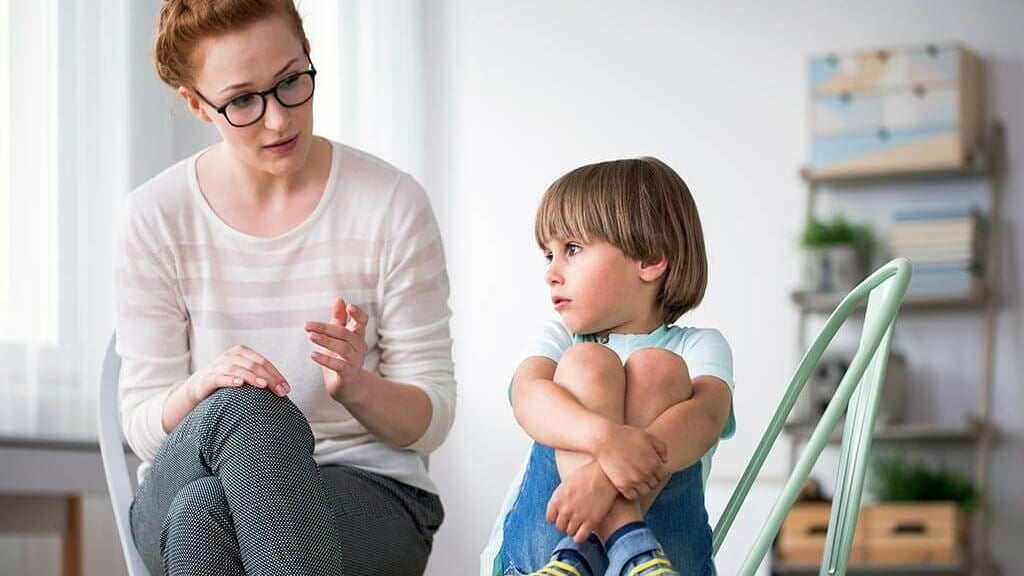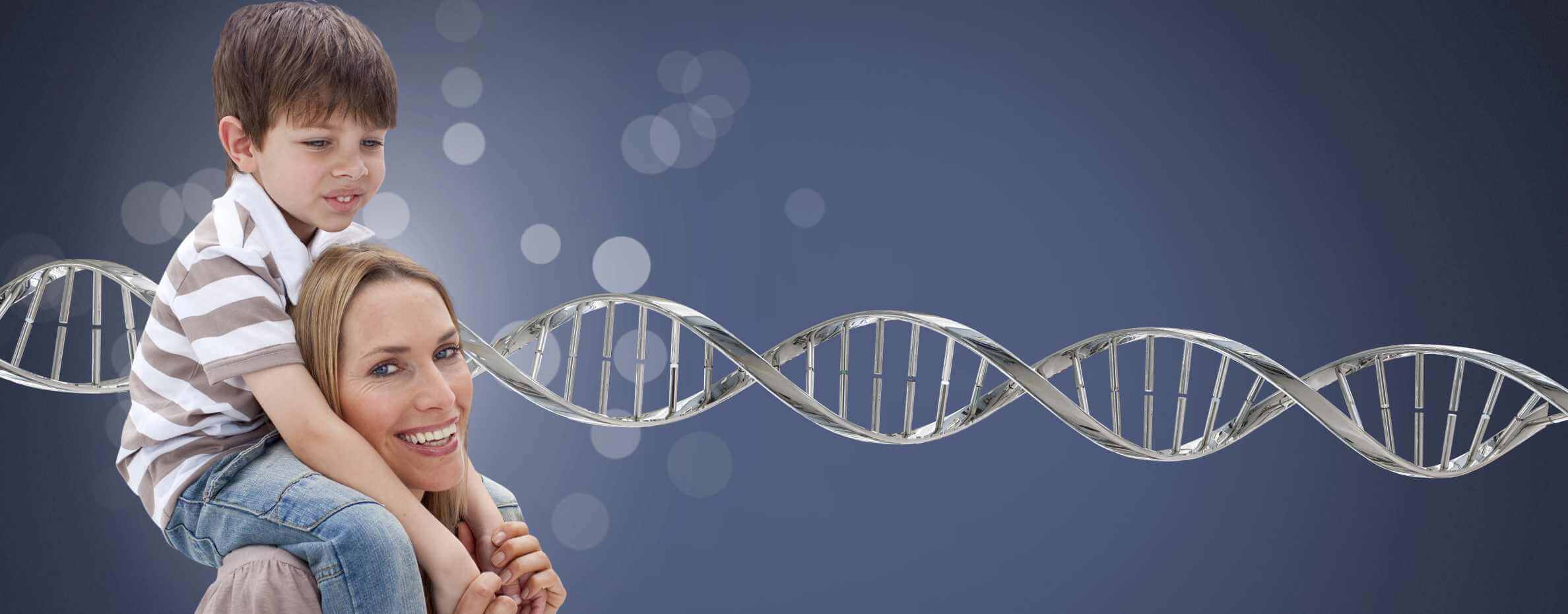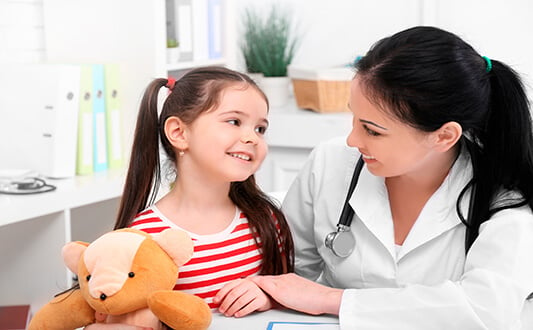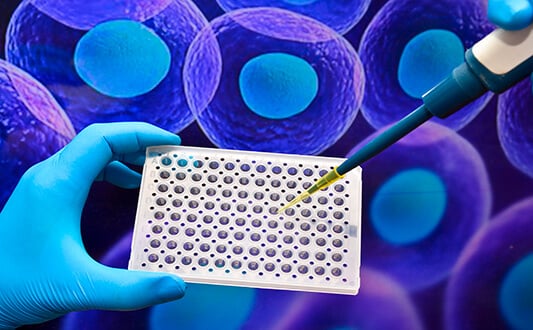Autism is one of the most commonly known disorders, diagnosed in 1-2% of children. Its reasons are unknown. The disease leads to impaired speech and interaction with other people, which in turn leads to mental retardation of the child. To avoid such consequences, it is very important to timely identify the disease and undergo a course of treatment. In addition to standard therapeutic methods, doctors are increasingly using stem cells. Their injection has a beneficial effect on the brain, improves the child's behaviour, and increases the effectiveness of further speech therapy and behaviour correction.
Autism Treatment Challenges and Advanced Medical Solutions in Germany
The existing methods of treating autism mainly consist of a complex variety of educational activities. In fact, this is a special workout for the child. He is taught to speak, perform certain actions and integrate into society.
Before starting treatment, the child's parents should be aware of the purpose of the interventions. In early childhood, they want the child to behave well at the table, to go to the toilet on his own, not to show aggression, and not to require the constant presence of an adult. As a child grows up, the needs of his parents change: they want the child to get an education, integrate into society, and adapt to the world. Moreover, the needs of the patient himself often run counter to the wishes of the parents. Autistic people are not particularly interested in representing themselves in society, they are not attracted to social status although in some professions they can achieve impressive results.
Thus, one of the problems of treatment is not understanding the goals. Before starting medical treatment, there is an important ethical question to be addressed: should the therapy primarily serve the goals of the parents or the patient? These goals are often completely different.
Another problem is the insufficiently high efficiency of the measures being taken. For treatments to work, they need to be applied continuously, over the years. However, not all parents have enough money and time to constantly treat their child.
Perhaps the problem of autism will be solved in the near future, if not completely, then at least partially. European clinics are increasingly using stem cells. They allow you to achieve impressive results in just a few courses. Such treatment does not require the constant presence of parents and an abandonment of the usual way of life. This gives long-term results and increases the effectiveness of subsequent pedagogical and psychotherapeutic measures.
Stem cells are the most physiological method of autism treatment. It is not just "teaching" the child in the hope that his behaviour will become acceptable to the parents. Stem cells can repair damaged areas of the brain and normalise immune system dysfunction in autism. Therefore, the child's behaviour and social skills begin to develop naturally. Such development does not contradict the desires and aspirations of the patient himself and does not cause discomfort and negative reactions in response to attempts at training.

What are the expected results of autism treatment with stem cells in Germany?
There are currently no effective standard treatments for autism. In most countries, only psychological and pedagogical correction is used, which helps children with autism spectrum disorders to adapt in society. However, many parents are not completely satisfied with the results of such interventions. Cell therapy can be used as an additional method. This is already practiced in some clinics in developed countries.
Before starting stem cell therapy, each child undergoes a careful medical examination to ensure safety. The treatment begins with harvesting the child's stem cells, typically from fat tissue or blood. These cells are specially processed in the laboratory before being reintroduced through intravenous infusion or injections. After the stem cell administration, results develop in phases. The first subtle changes in behavior may appear immediately after treatment, though some children may experience a brief adaptation period in the first two weeks.
The most noticeable improvements begin after the first month, with positive changes continuing to develop over 4-6 months. When stem cells are administered in multiple sessions, with carefully timed intervals between courses, parents often observe faster and more pronounced improvements in their child's social interaction and communication skills. The results can last for several years, varying by individual factors and ongoing supportive therapies.
As a result of stem cell therapy for autism in Germany, the following results can be achieved:
- Improvement of the child's eye contact.
- Improvement of attention. The child can respond to his name and show interest in other people.
- Pointing gestures and handling skills appear.
- Formation of imagination, the ability to play.
- Improving communication skills: the child develops speech, he begins to express his desires and perceive the emotions of other people.
- Ability to perform targeted actions.
- A child learns to switch between different types of behaviour.
- A child begins to smile, show emotions, and use facial expressions and gestures.
- A child learns to perceive the whole, not just see individual fragments.
- A child can better plan and coordinate his movements.
70% of patients on stem cell therapy have seen a sustained improvement. In 10% of cases, children can fully recover. In the future, these children will not have any manifestations of autism. They can normally communicate with others, create families, and earn professional achievements.
Inspiring Success Stories of Autism Treatment with Stem Cells
Among the success stories for autism medical treatment with stem cells, we share the experience of Cindy and her 6-year-old son who underwent stem cell therapy in Germany. "I couldn't be any happier," says Cindy, a 30-year-old mother whose journey to find effective therapeutic approach for her son's autism led her to Germany. After four years of trying various conventional approaches in different hospitals – from dietary supplements to physiotherapy – that only provided short-term relief, Cindy and her husband discovered stem cell therapy through online research.
The treatment process proved remarkably straightforward, requiring no special preparation. What particularly impressed Cindy was the comprehensive support system: from visa assistance to airport pickup, and crucial translation services throughout their stay in Germany. The day after arrival, they met with their doctor in the hospital, accompanied by an interpreter who ensured clear communication throughout the process.
The results were transformative. Today, Cindy's son lives what she describes as a "quite normal" life, with just annual follow-ups recommended. "He plays with children and friends... I mean, it's really normal now," she shares, encouraging other parents to "use this advantage of the stem cell therapy and waste no time on ineffective methods."
Here you can watch an exclusive interview with the mom of our patient who underwent stem cell treatment
Mechanisms of therapeutic action of stem cells for autism in Germany
The mechanism of action is not precisely established. Stem cells are expected to have a positive effect on the clinical course of autism by normalizing the patient's immune profile and releasing growth factors that stimulate tissue regeneration.
It used to be accepted that autism spectrum disorders were purely genetic but today there are more publications linking autism to immune disorders. The main immune causes are dysfunction of T cells and B cells, cytokines (especially interleukin-6) and increased activity of tumor necrosis factor-alpha.
Attempts have been made to correct immune disorders. For this purpose, steroids and intravenous infusions of human immunoglobulin were used. There have been several studies suggesting direct inhibition of cytokines. The best results are seen with stem cell injection. They have a positive effect on the state of human immunity, as they eliminate immune disorders and stimulate the work of neurons in the brain.
Preclinical studies show that intravenous stem cells can migrate into the brain parenchyma, reduce the consequences of its damage, and even repair damaged areas. The proposed mechanism of action is associated not with the transformation of stem cells into neurons, but with the release of growth factors that trigger reparative processes and angiogenesis (the formation of new vessels). The early intervention benefits were also demonstrated.
Most studies showing good results in autism use stem cells from the patient's own cord blood, but this must be prepared in advance at birth. Not all patients have cord blood supplies. Therefore, doctors can also use alternative methods of obtaining stem cells. They are taken from bone marrow, adipose tissue, or peripheral blood. The optimal source of mesenchymal stem cells is adipose tissue – here they are found in high concentration.
To learn more about the practical applications of stem cell therapy in autism and other conditions, we interviewed Dr. Siebenhüner, a renowned specialist from Germany, with over 40 years of medical experience who has been successfully implementing stem cell therapy for autism in Germany since 2005. Dr. Siebenhüner shared his insights about the effectiveness of stem cell therapy, its applications across various medical conditions, and what patients can expect from this innovative treatment approach.
Dr. Siebenhüner on Advanced Stem Cell Treatment: From Joint Recovery to Brain Regeneration
Studies confirming the effectiveness of stem cells in autism
Cellular regenerative medicine is a relatively young and poorly studied field of medicine. It is mainly used in oncohematology, orthopedics, and neurology. More and more studies are being conducted to assess the effectiveness of stem cell use in various pathologies. Over the past 10 years, a dozen studies have been carried out around the world to test the effectiveness of SC therapy in autism. This is still not enough to recommend the technique as a standard medical treatment for the disease. The results are encouraging however, as the majority of children treated with stem cell therapy have made significant improvements in social, emotional, behavioural and intellectual spheres.
Studies conducted at Duke University
In the United States, the stem cell research and autism are connected topics. The first stage of research was completed in 2017. The children were treated with stem cells from their own umbilical cord blood. According to the results of the study, the method was recognized as safe and potentially effective. The study involved 25 children aged from 2 to 6 years old, with confirmed autism spectrum disorders.
6 months after the stem cell injection, the patients showed improvement that affected behavioural responses, social and intellectual functions. All children had improved attention and speech. Patients with initially higher levels of non-verbal intelligence were able to achieve more tangible results.
The second stage of the study was conducted immediately after. This time, scientists at Duke University decided to test the influence of allogeneic (donor) stem cells on the development of children with autism. The study involved patients from age 2 to 11 years old. Intravenous injection of stem cells was carried out 4 times, with a break of 2 months between sessions. The results of the study have not yet been published.
Results of Gracie Gregory
Statistics have no face. Dry numbers indicating improvement in a certain number of patients do not motivate parents to choose stem cell therapy. To boost confidence in a new treatment for autism spectrum disorders, doctors at Duke University posted a video featuring the family of one of their patients: Gracie Gregory.
Gracie was 7 years old at the time the video was published. Her older sister Riley claims that before the stem cell therapy, she was very afraid of her and never sat down next to her. When Riley approached, Gracie threw a tantrum. Today the sister does not even remember this.
When she was 2 years old, Gracie was diagnosed with autism. The usual methods did not give good results: the first classes led to the little girl screaming, spitting and even hitting the doctor once. Routine hygiene practices can be aggressive. Gracie’s parents claim that the use of stem cells has completely changed their lives. They used to spend 75% of their time caring for their daughter but now they spend only 10% on this.
Gracie's parents were asked to rate their daughter's improvements on a scale of 1-10. They gave a score of 8 or 9. The parents were especially pleased that Gracie was able to go to a regular comprehensive school. This used to be considered impossible.
6 months after the final intravenous injection of stem cells, the parents noticed a significant improvement in the girl's condition. Since then, the severity of the pathology has been steadily decreasing, despite the fact that cell therapy is no longer performed. Some symptoms still persist but it is clear that Gracie is not who she was.
Translational Medicine Study
The Sutter Institute for Neurobiology conducted a placebo-controlled study. It was attended by 29 children. To treat autism, doctors used the patients' own cord blood, which contained stem cells. The results were positive: 12 weeks later there was a significant improvement in socialization in the children receiving the stem cells, compared to the placebo group. The Vineland Adaptive Behavior Scales were used to assess the results.
The essence of the study:
- Patients were divided into 2 groups.
- 1 group received stem cells, whilst the second group received a placebo (dummy).
- After 12 and 24 weeks, the treatment outcomes were evaluated.
- Repeated infusions with group rotation: now placebo recipients are treated with stem cells and vice versa (patients themselves do not know what therapy they are receiving each time).
The researchers themselves noted that the intervention is safe. However, in order to evaluate its effectiveness, they need further studies with more patients.
Parents of children in this clinical study reported clear improvements. Jennifer Lundberg, the mother of a boy named Hayden, said she was impressed with the results. In her opinion, the improvements she has seen can in no way be a simple coincidence and the result of the natural development of the brain. The fact is that Jennifer had been using standard therapeutic methods for over 4 years. These treatments had managed to achieve certain results but after using stem cells, the results became much better and they were achieved much faster! Hayden's mother claims that she noticed positive changes in her son's behaviour 2 weeks after the end of the course of intravenous infusion of stem cells.
Shandong Jiaotong Hospital Study
Another study on the use of stem cells in autism [1] was conducted in China. It was attended by 37 children aged 3 to 12 years. The study used donor cells’:
- Cord blood
- Umbilical cord mesenchymal SCs
The effect was calculated in a point system, taking into account a number of criteria, such as social interaction, emotions, communication and reactions to visual images. As a result, excellent outcomes were obtained:
- In 88.89% of cases (8 out of 9 patients) in the mesenchymal stem cell use group
- In 50% of children (7 out of 14) in the umbilical cord blood group
- In 7.69% (one out of fourteen) patients in the placebo group

Comprehensive management of autism in Germany
In addition to stem cells, the patient requires periodic or continuous treatment courses aimed at correcting behaviour, speech, and education.
- Logopaedic correction. Many children lose their ability to speak or become very poor speakers and some do not develop speech at all. The goal of treatment is to restore speech as early as possible so that the child can continue to develop intellectually. Speech therapy work is focused on replenishing vocabulary and developing auditory attention. Untimely speech correction leads to mental retardation.
- Neuropsychological correction. This includes a set of exercises to develop communication skills and cognitive functions of the brain. The child trains the muscles of the tongue and jaw, hand motility and performs exercises to relax the nervous system.
- Music therapy. This has not only a psychotherapeutic effect but also improves the perception of information. Research shows that this line of treatment allows you to better build relationships with others.
- Psychosocial therapy. Allows you to form emotionality, motivational and volitional qualities, and communication skills with others. This type of treatment is especially important when the child is growing up, as the lack of social skills is especially acute during adolescence.
- Other methods. Doctors may use hippotherapy, dolphin therapy, physical exercises, physiotherapy, massage, or pool exercises.
Where can patients with autism receive medical care in Germany?
When signs of autism appear, therapy should be started as soon as possible to develop speech and avoid mental retardation. In Germany, you can undergo both diagnosis and therapy. Some hospitals use stem cells to combat this pathology. Cellular therapy complements other treatment modalities, allowing doctors to experience more tangible results.
In particular, the Clinic of Advanced Biological Medicine in Frankfurt-am-Main, Germany, offers cell therapy. The cost of stem cell treatment for autism in the Department of Alternative Medicine in Germany ranges from €21,000 to €25,000, depending on the combination with other therapeutic measures, individual patient needs, and therapy duration.
Booking Health facilitates access to the most effective autism treatment programs in various hospitals Germany. Working directly with leading medical facilities, we ensure each patient receives a tailored treatment plan. Our medical advisors carefully analyze your medical history and specific needs to recommend the most suitable location and specialists. We also assist with urgent cases, helping expedite the treatment process when time is critical.
You can book a treatment program through the Booking Health company. Here are some of our services and benefits:
- Selection of the best hospitals that have experience in treating autism with stem cells and demonstrates the best results.
- Reducing the average cost of treatment by up to 50% due to the absence of overpricing and additional coefficients for foreign patients.
- Making an appointment for the dates most suitable for you.
- Preparation of the program, taking into account the previously performed studies.
- Establishing communication directly with the attending physician.
- Control of all stages of the program.
- Insurance against the increase in the cost of treatment, in case of complications (coverage €200,000).
- Account control, return of unspent funds.
- Purchase and shipping of medicines.
- Organization of additional diagnostic or therapeutic procedures in the hospital.
- Communication with the clinic upon treatment completion.
Booking Health will provide you with the highest quality services. We will book airline tickets for you, a hotel room, meet you at the airport in Germany and take you to the clinic location by car. After the completion of the autism stem cell treatment program, we will arrange a return transfer.
Frequently Asked Questions of Our Patients About Stem Cell Treatment For Autism
Send request for treatmentDiagnosis begins when parents notice developmental delays in crawling, pointing gestures, or speech development. Medical professionals then conduct evaluations following International Classification of Diseases standards.
German doctors require at least six signs across three categories: social interaction, communication, and behavioral patterns. All manifestations must appear before age 3 to confirm diagnosis.
Severity is measured using the CARS (Childhood Autism Rating Scale) for children aged 2 and older. The scale ranges from 0 to 60 points, with autism diagnosed at 30 points and severe autism at 37 points or higher.
Autism progresses through three main stages over 2-3 years: psychosis (developmental slowdown), regression (speech loss), and catatonic (symptom reduction with catatonic disorders). Development usually resumes afterward.
Germany offers comprehensive treatment combining medication, therapy, and pedagogical intervention, with early intervention being crucial. Recent developments include promising stem cell therapy options.
The primary treatments include continuous behavioral therapy, the TEACCH method, and the ABA technique. Stem cell therapy is an innovative and promising treatment approach in Germany, significantly improving behavior and social interaction.
Stem cell therapy for autism involves harvesting stem cells from blood or bone marrow, processing them in a laboratory, and administering them to the patient through intravenous infusion or intrathecal injection into the spinal fluid.
Stem cell therapy shows promising results as part of a comprehensive treatment approach that includes behavioral therapy, occupational therapy, and speech therapy, with many patients demonstrating improvements in social communication and cognitive function.
Choose treatment abroad and you will for sure get the best results!
Authors:
This article was edited by medical experts, board-certified doctors Dr. Nadezhda Ivanisova, and Dr. Bohdan Mykhalniuk. For the treatment of the conditions referred to in the article, you must consult a doctor; the information in the article is not intended for self-medication!
Our editorial policy, which details our commitment to accuracy and transparency, is available here. Click this link to review our policies.
Sources:
[1] Yong-Tao Lv, Yun Zhang, Min Liu, Jia-na-ti Qiuwaxi et al. Transplantation of human cord blood mononuclear cells and umbilical cord-derived mesenchymal stem cells in autism. J Transl Med. 2013 Aug 27;11:196. doi: 10.1186/1479-5876-11-196. [DOI] [PMC free article]
Read:
Article menu:
- Autism Treatment Challenges and Advanced Medical Solutions in Germany
- What are the expected results of autism treatment with stem cells in Germany?
- Inspiring Success Stories of Autism Treatment with Stem Cells
- Mechanisms of therapeutic action of stem cells for autism in Germany
- Studies confirming the effectiveness of stem cells in autism
- Comprehensive management of autism in Germany
- Where can patients with autism receive medical care in Germany?
- Frequently Asked Questions of Our Patients About Stem Cell Treatment For Autism
Don't know where to start?
Contact Booking Health






